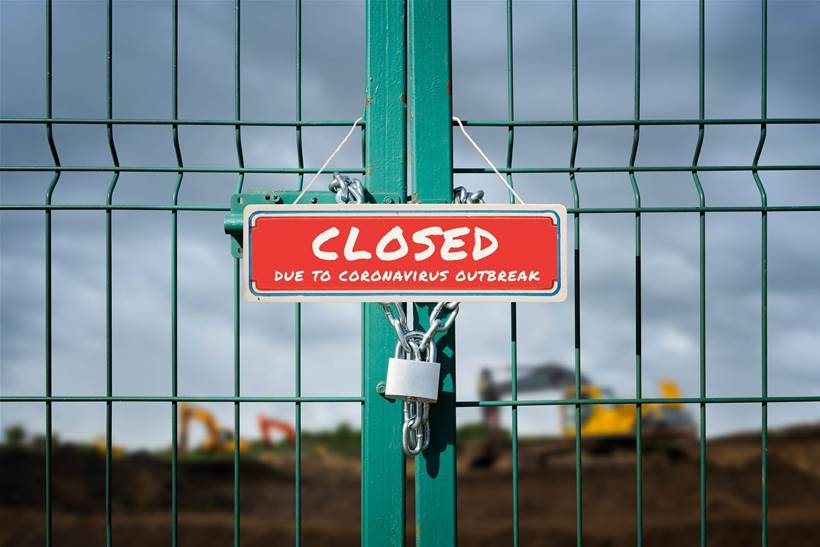Australian organisations will need to overhaul their real-time, remote management capabilities as a result of the COVID-19 crisis, says the nation’s peak industry body for the Internet of Things (IoT).
IoT Alliance Australia (IoTAA) predicts the pandemic will permanently change the way Australian organisations operate – increasing the need for remote management of everything from medical supplies to industrial equipment.
That will require Australian businesses and governments to use sensors and networks to connect assets, processes and people on a larger scale, and share more data.
To facilitate industry discussion about the pandemic, IoTAA and various members have sponsored the creation of an online COVID-19 discussion hub, published by IoT Hub. Entech Electronics, Honesty Box, Inmarsat, KPMG, Meshed, Optus, Reekoh, Successful Endeavours, Telstra, and the University of Wollongong Smart Infrastructure Facility are sponsoring the hub.
In an interview for the hub, IoTAA CEO Frank Zeichner said he sees real-time data becoming vital to Australia, on two levels.
Firstly, he sees IoT being used to respond directly to pandemics, by “tracing the origin of the pandemic, where it might start, where the pockets are, compliance with quarantining, patient care, and importantly, the management of scarce resources,” he says.
Secondly, Zeichner sees IoT becoming essential to everyday business during crises. “How will organisations manage and monitor remotely what before took people before to do? That requires the Internet of Things,” he says.
Companies will need to build more resilient supply chains by tracking and managing goods remotely and in real-time, Zeichner predicts. He also sees challenges managing employees, equipment and other resources during lockdowns. Another challenge will be remotely controlling and maintaining operations. Then there’s the need to secure premises and manage building systems when many personnel are no longer on site.
All that requires real-time, non-fragmented data from multiple sources, Zeichner says. Some of the data could also help emergency responders.
Collecting and combining that data remains a significant challenge. “The technology pretty much exists. But the actual connecting of the fabric of our companies and our nation to share it and collect it together is what’s needed. COVID-19 in some ways is a catalyst for driving some of that,” he comments. Listen to Zeichner discuss the crisis here.
Modernising digital foundations
Some Australian organisations have sped up their digital transformation activities since COVID-19 arrived, says Piers Hogarth-Scott, KPMG partner and chair of the IoTAA Executive Council.
Others have paused these projects. “We’re seeing some organisations who have put spends on hold for various reasons – including the fact they might not have the capabilities to support the existing remote working arrangements,” Hogarth-Scott explains.
But once the initial COVID-19 crisis passes, Hogarth-Scott predicts “massive” spending on technology by organisations that weren’t equipped to deal with the pandemic."We’re in a new world, whereby digital capability is absolutely front and centre," he says.
Hogarth-Scott encourages those organisations to use technology spending as an opportunity to embed IoT, artificial intelligence and machine learning in their businesses. Hogarth-Scott talks about these issues here.
Monitoring the public’s response to crises
Organisations shouldn’t underestimate the value of data they’re already collecting. Even digital pedestrian-counters can provide valuable data during a public crisis, says IoTAA board member Catherine Caruana-McManus.
Pedestrian counters can be found in more than 180 locations throughout Australia, due to work by Sydney company Meshed and local councils to develop the counters. The anonymised data generated by the counters is particularly interesting in the context of COVID-19, says Caruana-McManus, who is also a Meshed Director.
“That data is very useful, not just in providing that information to the city councils who can then of course see the social and economic impact of this crisis – but also it can be shared with other agencies, such as health organisations, or local medical centres and practitioners, particularly where they’re wanting to set up local testing facilities,” she explains.
Traders and commercial leasing operators could also use people-counters to monitor the effect of social isolation rules on building occupancy, Caruana-McManus suggests. IoT could also report the location of equipment needed by the community, such as generators or refrigerators, making it easier to allocate it to people most in need.
COVID-19 provides a reason to make such technologies “more embedded in the fabric” of organisations such as schools and hospitals, Caruana-McManus argues.
Real-time data can also prove useful during natural disasters. For example, IoT sensors were used during the recent bushfires to provide air quality monitoring, Caruana-McManus points out.
But better data sharing will be necessary. “At the moment we have a very fragmented view of data and if nothing else this situation provides a catalyst for better data sharing within public agencies, but also between public and private – such as public and private hospitals,” she says.
Competitive advantage
There’s another reason for businesses and governments to consider these issues – competition.
Zeichner comments: “At the other end [of the COVID-19 crisis] I think we’ll all be looking at remote, real-time management of data to make decisions. For our competitive national position we’re going to need to take that up quickly,” says
Indeed, the World Economic Forum states “It is now the moment for countries to fast-track the construction of new digital infrastructure, such as IoT along with AI”.
That’s a message businesses and governments have heard before. But they might consider it in a new light now.
The IoTAA is a sponsor of this COVID-19 discussion hub.
Focus is increasing on use of real-time data to combat the COVID-19 pandemic. See our special coverage about key issues.






